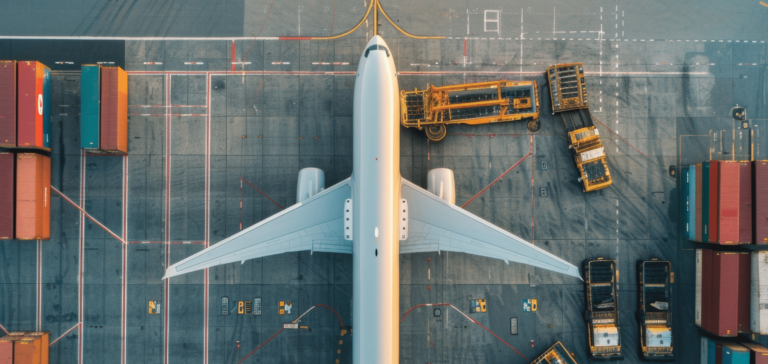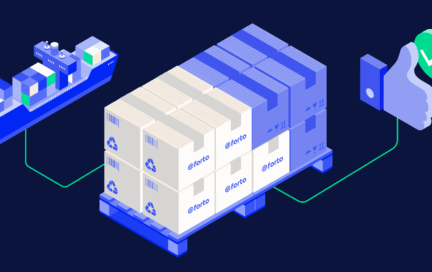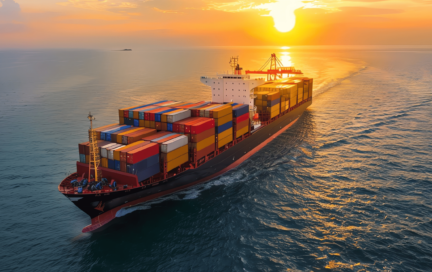Essential Air Freight Guide: Fast, Reliable Shipping for Your Cargo
For a long time, air freight was considered as the only option for particularly high-value freight and urgent, special deliveries. However, this way of thinking has become outdated and air freight is enjoying increasing popularity, due to its high reliability and great on-time performance. Especially in the current market situation is air freight more than ever attractive, while ocean freight is struggling with huge delays and high freight rates due to the recent blockage of the Suez Canal or the port congestion in Yantian.
Therefore, it’s not surprising that more and more airlines are converting their fleet to cargo machines and increase their offerings in this area. For overseas trade in particular, air freight has become indispensable. The world’s largest transshipment hubs are in Asia. However, Germany is already among the top ten global hubs, with Frankfurt, Leipzig/Halle and Cologne/Bonn airports. This article will provide you with all the information you need to know about air freight as a mode of transport and underlines what you should consider in order to take advantage of its many benefits.
Understanding Air Freight Basics: What is it About?
In general, air freight can be defined as the transportation of goods by aircraft. The cargo can be transported either on scheduled or charter flights, depending on the volume and urgency of the freight as an express or courier shipment. In addition, a general distinction is made between consolidated air freight and individual shipments, more commonly referred to as standard air freight. Such standard air freight is usually loaded below the deck of a passenger aircraft, why it is also called a belly flight.
Smaller shipments, which are more often the case, are transported on standardized ULD (Unit Load Device) containers — larger items on ULD pallets. These are transported via liner, where the entire space of the aircraft is filled with containers. More than two-thirds of all air cargo is thus transported on only cargo aircraft and one-third as additional cargo on regular passenger flights. The share of freight is increasing, especially for distances over 4,000 kilometers. Not only for flights to China, but also for destinations in the Middle East.
The most important categories of air freight goods include electronics, machinery, optical medical instruments, and pharmaceutical products. One-way traffic is particularly characteristic of air cargo. Thus, unlike passengers, air cargo generally does not return to its point of loading. This creates an imbalance in traffic volume, which often results in overcapacity in one shipping direction.
Who are Important Players in the Air Freight Market?
Like handled in other transport modes, the offer a shipper receives relates to the available capacity of a carrier. In the case of air freight, the carriers are the airlines. They sell their capacities to forwarders, who in turn try to fill them with cargo.
But there is an additional point when it comes to transportation via air freight. Since several countries might be flown over, encompassing a wide variety of country-specific agreements, other players are also involved beyond the contractual setting of the cargo given and cargo handled parties. In order to create uniformity and equal rights for all participants, the International Air Transport Association (IATA) was formed, which acts as an umbrella organization.
Generally, the freight forwarder acts as the middleman between the carrier and the customer in consolidated freight transport. Additionally, the freight forwarder acts as an agent of IATA, and thus has an intermediating function. Forto also holds an IATA license and has access to a broad and reliable network of partners in order to find the best solutions for its customers. The contractual proof of the cargo shipment is given by a document called “Air Waybill” (AWB).
How Can Duration and Costs be Calculated?
The fastest way to get goods to their destination
The most impressive advantage of air freight is obvious: the speed. While courier goods are delivered latest the next day, express goods arrive after a maximum of three days and standard goods after a maximum of seven days. This means that air freight, compared to sea or rail freight, is clearly the fastest mode of getting goods from A to B. This is an enormous competitive advantage, especially for time-sensitive and very valuable goods, where the customer expects to be informed about the status of the shipment at all times and is reluctant to accept long transit times.
Calculating air freight: general freight rates
The price structure in air freight is based on the cost calculation of consolidated air freight, according to the IATA calculation scheme, which is published in the tariff table of The Air Cargo Tariff Manual (TACT), which basically applies to transport from airport to airport. The price calculated in this way must be indicated in the Air Waybill together with the calculation method. In practice, the calculation of air freight rates is extremely complex, since in addition to the general rates there are other factors, such as commodity class rates and special rates, which subsequently influence the final price.
The general calculation basis of TACT rates depends on two quantities. The volume weight, is the space-consuming mass of the cargo, compared to the cargo’s actual weight. The highest of the two values is then used as the basis for calculating the price. For air freight, the basic factor 1 m³ = 167 kg is used. In addition, better prices can be offered on routes that serve a high volume of air freight compared to lower-volume exotic routes. The total amount of the ordered shipping volume will clearly decide the price.
There are also separate calculations in TACT for full container loads. On top of the IATA rates, there are additional charges and costs for the forwarder. In the end, the final price for an airfreight shipment is made up of many factors. So it’s hardly surprising that, with traditional forwarding agencies, a price calculation can take several days, and the final price is not always clearly evident in the offer.
Organizing Air Transports
Steps you need to take to get your goods into the air
Regardless of whether you want to transport a full container load or only a partial load: after you’ve contracted a forwarding agent, you will need to handle the necessary formalities. We at Forto are glad to help you to take all these steps and help to simplify the process. Step one is the determination of the Incoterm and the specification of the scope of the shipment in the freight contract. The abbreviation Incoterms stands for International Commercial Terms, i.e. international trade clauses that traders use when concluding contracts to define the uniform distribution of costs and obligations as well as the transfer of risk.
The next step is to book the freight space and organize customs clearance. As already described, air freight is offered either in only cargo aircraft or as additional cargo in passenger aircraft. Another variant of transportation is also air freight substitute transport by truck or rail. This alternative is also generally referred to as road feeder service and is implemented on behalf of the airlines. Although the transportation obviously takes place on the ground, the cargo retains the official status of air cargo.
As the upstream and downstream stages in the shipping process, ground transports stand in addition. These concern the pre-carriage, i.e. the onward transfer of the goods from the consignor to the airport, and the onward carriage, i.e. the route from the airport to the consignee. These are organized by air freight forwarders on behalf of the consignors and consignees.
Advantages at a Glance
Air freight offers you probably the fastest, safest and most efficient way to transport goods. Its biggest advantage – speed – is obvious. If you want your goods to reach their destination as quickly as possible, air freight is undoubtedly the best option. In direct comparison to the popular sea alternative, airplanes are about 30 times faster en route.
But air freight is also way ahead in terms of reliability. Airlines are better than ocean freight companies at handling schedule changes, which makes air freight departure and arrival times significantly more reliable. A missed departure with a shipping line can mean a delay of a day or more. Airlines, on the other hand, adhere to a strict schedule, usually with multiple flights per day.
In addition, air freight is a much safer alternative to ocean freight, which is especially relevant for high-value goods. Anyone stuck in an airport security queue can relate. That’s because cargo goes through a strict, standardized process, with multiple security checks at the airport ensuring that the risk of damage or theft is reduced compared to ocean freight. And even though piracy on the seas is on the decline, shipments of goods are more likely to be damaged or go overboard while being transported across global waters. In 2020, more than 3,000 containers were lost this way in 80 days. A risk that does not exist with air freight.
Even if air freight seems a lot more expensive at first glance, the short transit times also mean a significantly higher turnover of goods, which in turn leads to lower capital commitment costs. This has a positive effect on your cash flow.
Forto’s air freight service provides you with a reliable way to get your goods to their destination, even in the current situation. Would you like to learn more about Forto’s air freight solutions? Feel free to contact us by mail with your request here. Our team of experts will be happy to provide you and your shipments with the necessary tailwind.
Frequently asked questions about Air Freight
-
Air freight refers to the transportation of goods by aircraft. It is the fastest mode of international shipping, commonly used for high-value, time-sensitive, or perishable cargo.







